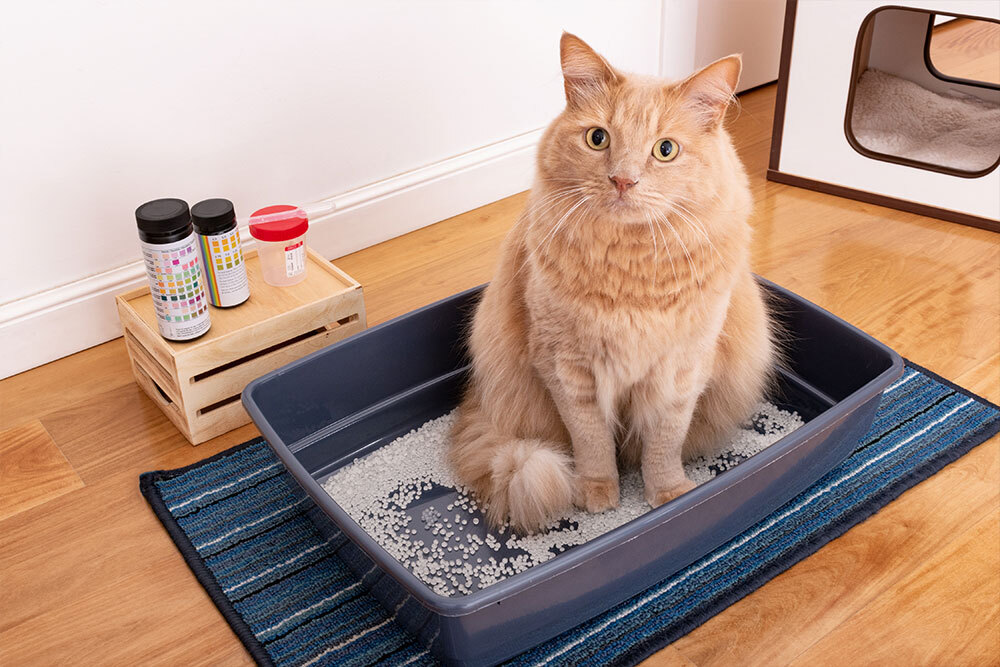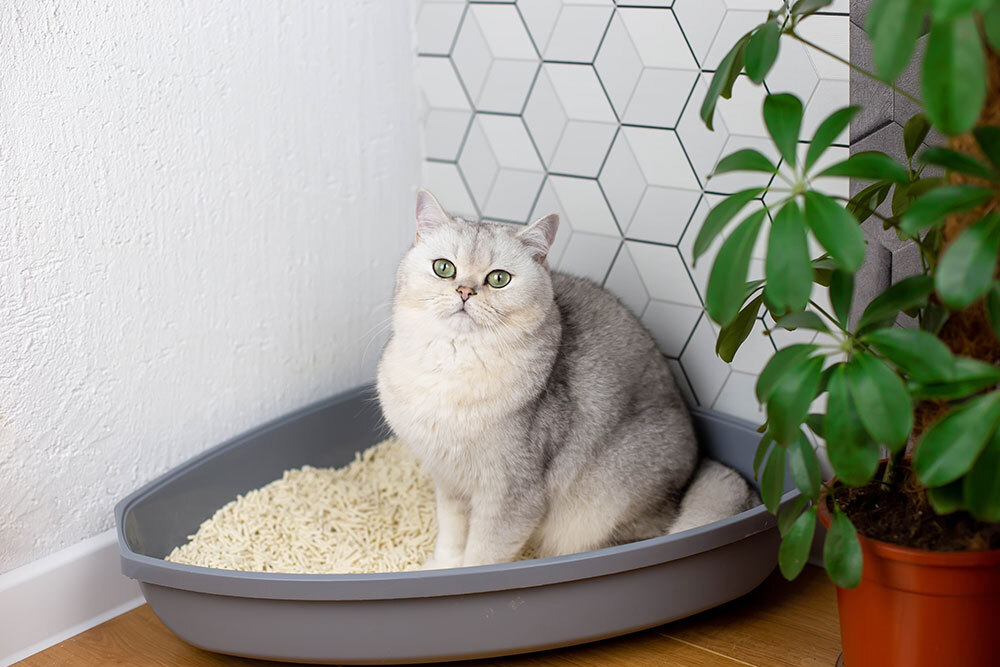Blocked Cat? Why Peeing Problems Can Be a Medical Emergency
Driftwood Animal Hospital | Daytona Beach, Florida
The litter box is one of the clearest indicators of a cat’s health. When something changes- straining, frequent trips, or vocalizing- it’s not just a behavioral concern. One of the most urgent causes behind these signs is a urinary blockage, a life-threatening condition that requires immediate medical care. Understanding what causes these blockages, how to recognize them, and what to do next can protect your cat from long-term damage or worse. At Driftwood Animal Hospital, veterinary teams are trained to act quickly and support both pets and their owners through these stressful moments.
What Is a Feline Urinary Blockage?
A urinary blockage happens when something in the urethra prevents urine from exiting the bladder. Male cats are particularly at risk because their longer, narrower urethra is easily obstructed by crystals, mucus, or debris. When urine cannot pass, toxins accumulate quickly, leading to electrolyte imbalances, kidney damage, and potentially fatal complications.
Common Causes of Urinary Obstruction
Inflammation from Idiopathic Cystitis
When the bladder lining becomes irritated without infection, it is called idiopathic cystitis. This condition increases mucus production and muscle spasms that can plug the urethra. Identifying early signs of feline idiopathic cystitis and reducing stress through environmental enrichment are key to preventing obstruction.
Mineral Crystals and Stones
Concentrated urine or pH imbalances can lead to the formation of struvite or calcium oxalate crystals. Over time, these minerals aggregate into stones that may lodge in the urethra. Tailored diets and increased water intake help dissolve crystals and reduce recurrence.
Bacterial Urinary Tract Infections
Although less common in cats, bacterial infections can irritate the bladder and produce debris that blocks the urethra. Accurate diagnosis through culture and sensitivity testing ensures targeted antibiotic therapy for effectively treating urinary tract infections in pets.
Protein and Cellular Plugs
Inflammatory material and blood cells can combine into soft plugs that obstruct urine flow. After catheterization, a sterile bladder flush removes these plugs and restores normal emptying.
Early Warning Signs Every Owner Should Know
Recognizing symptoms early can save your cat’s life. Seek veterinary attention immediately if your cat exhibits any of the following:
- Repeated attempts to urinate with little or no output
- Straining in a hunched posture without producing urine
- Vocalizing or crying while in the litter box
- Lethargy, hiding, or loss of appetite
- Vomiting or drooling from toxin buildup
- A firm, distended abdomen that feels tender
Even partial obstructions can deteriorate rapidly. Do not wait for a complete blockage before seeking help. If you are unsure about whether your cat is in pain, resources like the Feline Grimace Scale can help you interpret subtle changes in facial expression and body language.
Driftwood Animal Hospital accepts emergencies during normal business hours and partners with local after-hours emergency providers at Emergency Vet Volusia for care when our doors are closed.
Diagnostic Approach at Driftwood Animal Hospital
When you arrive, our veterinarians perform a thorough physical examination and monitor vital signs. We conduct in-house blood tests to assess kidney function and electrolytes, and urinalysis to check pH, crystals, and infection. Digital radiographs identify radiopaque stones, while abdominal ultrasound offers real-time imaging of bladder wall changes, stones, or fluid accumulation.
Emergency Treatment Protocol
Once a blockage is confirmed, stabilizing your cat is our immediate priority:
- Intravenous Fluids restore hydration, correct electrolyte imbalances, and support kidney perfusion.
- Pain Management relieves discomfort and reduces urethral spasms.
- Urethral Catheterization gently clears the obstruction under sedation.
- Bladder Flushing with sterile solution removes residual debris and reduces re-blocking risk.
Monitoring and Supportive Care
After catheterization, we provide continuous monitoring in our dedicated care ward. Fluid therapy continues until electrolytes normalize. Blood pressure and urine output are tracked closely. If infection is identified, targeted antibiotics are administered. Our monitoring protocols ensure your cat receives hands-on care throughout recovery.
Surgical Options for Recurring Blockages
When urinary blockages return despite diet changes and medical care, surgery may provide the best long-term solution. A perineal urethrostomy (PU) creates a wider opening in the urethra, making it harder for stones, mucus, or debris to obstruct urine flow. Because it is a major procedure, PU surgery involves thorough preoperative evaluation and careful postoperative management, but for many cats it offers the greatest chance of preventing painful, repeated blockages.
Preventing Future Obstructions
Diet and Hydration Strategies
Maintaining dilute, balanced urine is essential. Encourage your cat to drink more by offering wet food, using multiple water bowls, or investing in a cat fountain for circulating water. Prescription urinary diets also support balanced pH and reduce crystal formation.
Stress Reduction and Environmental Enrichment
Stress is a known trigger for urinary issues. Offer climbing spaces, hiding spots, and interactive play. Regular enrichment- like DIY enrichment toys– keeps cats mentally engaged. For more comprehensive strategies, the Indoor Pet Initiative provides evidence-based guidance on creating a home environment that supports both mental and urinary health.
Litter Box Habits Matter
Cats are highly sensitive to their litter box setup. Clean, large, and low-entry boxes placed in quiet, accessible areas encourage normal elimination. In multi-cat households, multiple boxes reduce stress and competition. The cat litter box guide explains how box type, litter choice, and placement directly impact urinary health.
Regular Wellness Examinations
Yearly wellness visits allow early detection of crystals, infections, or kidney changes before they escalate into emergencies. Routine urinalysis, blood panels, and imaging provide a clearer picture of urinary health over time.
Why Choose Driftwood Animal Hospital
At Driftwood Animal Hospital, we combine cutting-edge technology with compassionate, individualized care. Our facility features digital imaging, in-house laboratory services, and a skilled team dedicated to excellence. We believe every cat deserves the highest standard of medicine and every owner deserves clear communication and support.
Next Steps for Concerned Cat Owners
Seeing your cat struggle in the litter box can be frightening and overwhelming, but you are not alone in facing this crisis. If your cat displays any symptoms of urinary blockage, call (386) 255-1407 right away.
To schedule a preventive wellness exam or discuss strategies for long-term urinary health, complete our online appointment request form. We are here to provide comprehensive care, ongoing support, and a path back to comfort and health.









Leave A Comment